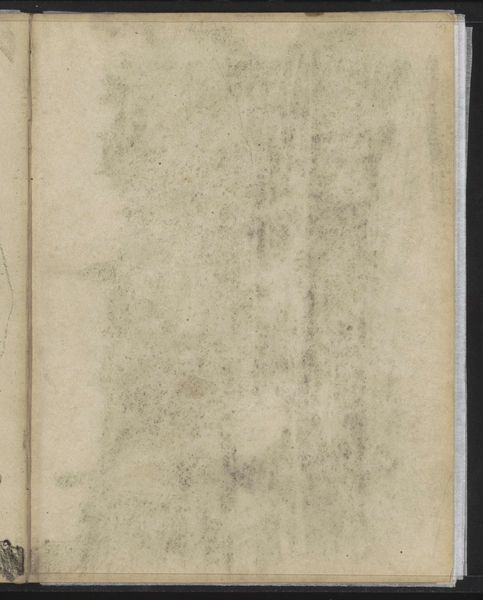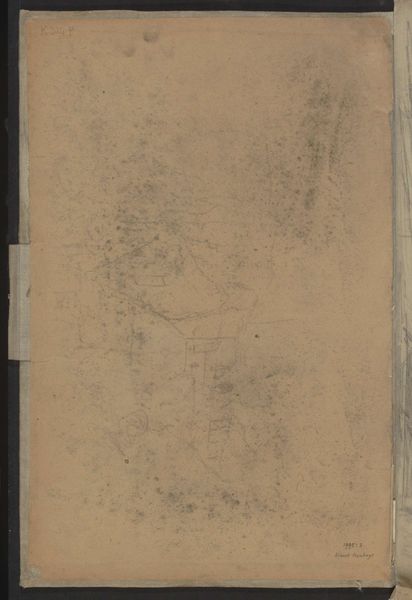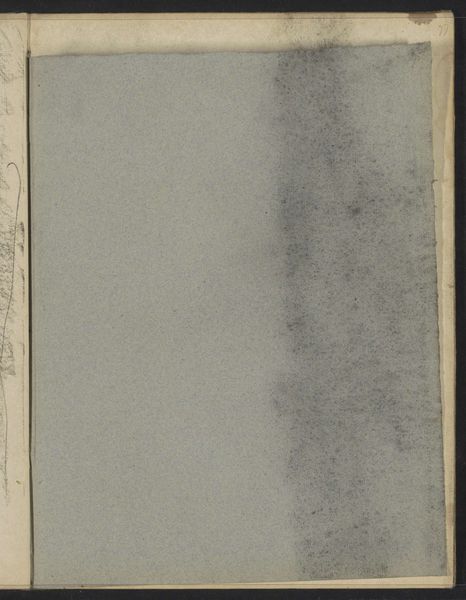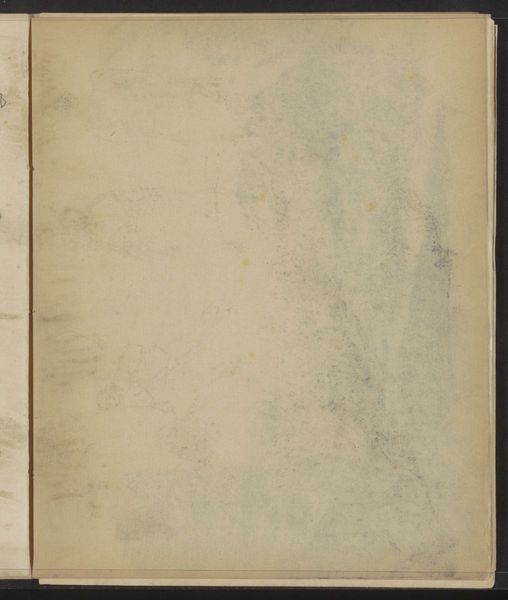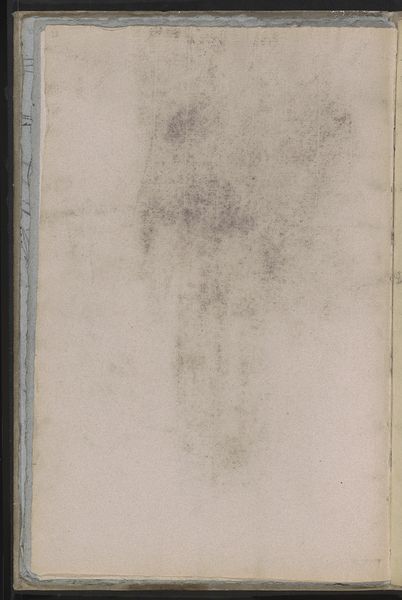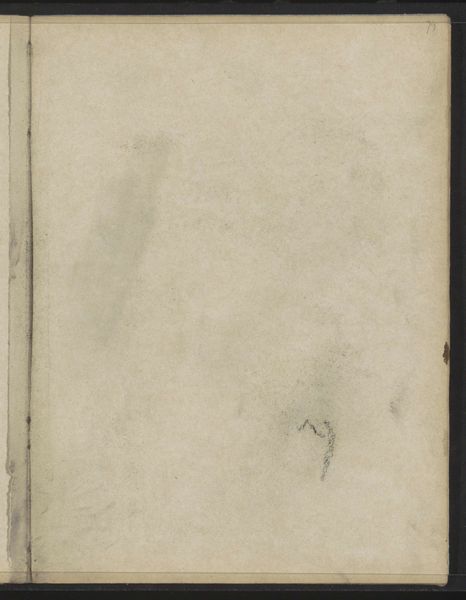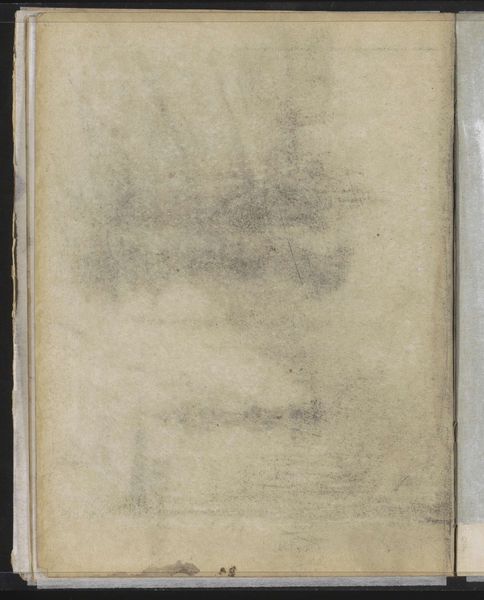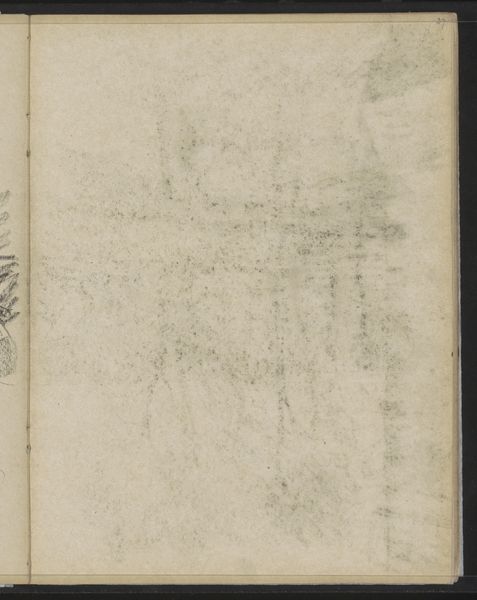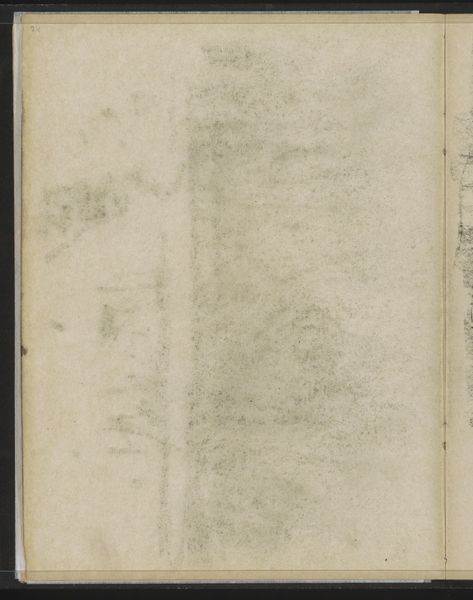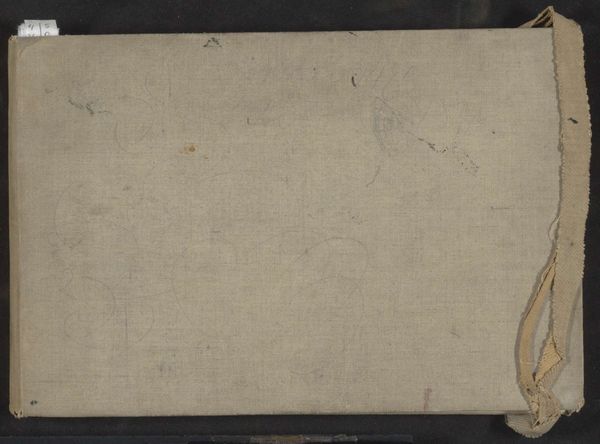
#
aged paper
#
toned paper
#
sketch book
#
incomplete sketchy
#
hand drawn type
#
personal sketchbook
#
hand-drawn typeface
#
pen-ink sketch
#
sketchbook drawing
#
sketchbook art
Copyright: Rijks Museum: Open Domain
This chalk drawing on paper is by Willem Witsen, made at an unknown date. Though seemingly abstract, the varying shades and textures are evocative of a landscape shrouded in mist, a common motif in Dutch Golden Age painting. The Romantic era sought to connect the human soul to the sublime power of nature. Consider how this motif reappears throughout history, from the mists in Caspar David Friedrich’s landscapes that suggest a confrontation with the unknown, to the atmospheric effects in Impressionist paintings that evoke a sense of fleeting experience. Mist, as a visual symbol, can also represent obscurity, the veil of the unconscious. The yearning to connect with a higher spiritual reality is a recurring theme in art history. This is a powerful force engaging viewers on a deep, subconscious level. As we contemplate this drawing, we witness how the motif of mist, of the veiled landscape, resurfaces, evolves, and takes on new meanings across time.
Comments
No comments
Be the first to comment and join the conversation on the ultimate creative platform.
